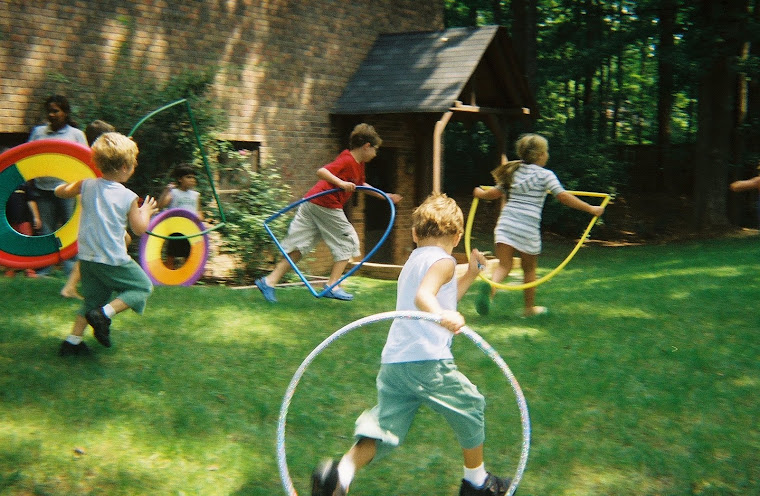Autism as a sensory issue is very tricky, so many things over lap and intertwine. The classic indicators seem to almost be the same.
In fact, I really hold to the opinion, that the two diagnoses are irrevocably meshed.
Having said that , however, there nonetheless remains a need to differentiate between these two distinct issues.
The two lists offered here are to help illustrate just how careful we need to be in suggesting parents further investigate clinically observed behaviors. I also suggest that clinicians use these lists as informal checklists as part of their parent in-take process or in the course of therapy as needed. I advise making this into one list but keeping the items separated, and then note which items from the two categories are most noted.
The suggested items* for each issue is listed below: (*complied from various sources)
Sensory Integrative issues may be characterized by:
1. Either be in constant motion or fatigue easily or go back and forth between the two.
2. Withdraw when being touched.
3. Refuse to eat certain foods because of how the foods feel when chewed.
4. Be oversensitive to odors.
5. Be hypersensitive to certain fabrics and only wear clothes that are soft or those they find pleasing.
6. Dislike getting his or her hands dirty.
7. Be uncomfortable with some movements, such as swinging, sliding, or going down ramps or other inclines. Your young child may have trouble learning to climb, go down stairs, or ride an escalator.
8. Have difficulty calming him or her after exercise or after becoming upset.
9. Jump, swing, and spin excessively.
10. Appear clumsy, trip easily, or have poor balance; odd posture
11. Social skill issues/authority issues.
12. Tantrums
13. Overly sensitive to criticism
14. Either always on the go or very sedentary
15. Memory difficulties and/or problems following directions
16. Have difficulty handling small objects such as buttons or snaps.
17. Be overly sensitive to sound. Vacuum cleaners, lawn mowers, hair dryers, leaf blowers, or sirens may upset your child.
- Lack creativity and variety in play. For instance, your child may play with the same toys in the same manner over and over or prefer only to watch TV or videos.
While Autism and or PDD issues may be characterized by:
1. Insistence on sameness; resistance to change
2. Difficulty in expressing needs; uses gestures or pointing instead of words
3. Repeating words or phrases in place of normal, responsive language
4. Laughing, crying, showing distress for reasons not apparent to others
5. Prefers to be alone; aloof manner
6. Tantrums
7. Difficulty in mixing with others
8. May not want to cuddle or be cuddled
9. Little or no eye contact
10. Unresponsive to normal teaching methods
11. Sustained odd play
12. Spins objects
13. Inappropriate attachments to objects
14. Apparent over-sensitivity or under-sensitivity to pain
15. No real fears of danger
16. Noticeable physical over-activity or extreme under-activity
17. Uneven gross/fine motor skills
- Not responsive to verbal cues; acts as if deaf although hearing tests in normal range.
And, as illustrated here, it is easy to see, especially in very young child (ages 2-6) how these behaviors can be dismissed as “they’re young, they’ll grow out of it.” And making broad statements, suggestions of referrals to other sources, etc., may be very frightening to parents, especially if they have been trying to tell themselves that the nagging feelings they have been experiencing is due to being an “over-protective mother”.
A psychologist who refers to my practice once counseled me about informing parents of issues with their children. She said, “…the first person to tell them gets shot, the second shoved and the third gets listened to. Try to be number 3.”
In our position as occupational therapists, we are often put in the role of being “number one”. Being the resource person in the schools, the first referral source of pediatrician, the person known in the community for what we do, etc. puts us in the precarious position of saying first to a parent, “there is something that needs to be investigated”. I hope that the use of these lists when converted into a check- list will help guide both our families and us in the quest to provide empathic quality care.
Susan N. Schriber Orloff, OTR/L is the author of the book. “Learning RE-Enabled” a guide for parents, teachers and therapists,(a National Education Association featured book) as well as the CEO/Exec. Director of Children’s Special Services, LLC an occupational therapy service for children with developmental and learning delays in Atlanta, GA. She can be reached through her website at www.childrens-services.com or at sorloffotr@aol.com.

No comments:
Post a Comment